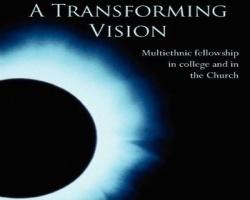In college, I joined the AME Zion Church, part of a historically black denomination that is more than 200 years old. It had the same feel and flavor of my home church, and I began my teaching and preaching ministry there. Through the years, I had many white friends, but I can’t say I was ever intentionally involved in racial reconciliation; and I never before had worshiped in a non-black environment. The closest I had come was hearing white contemporary worship music on the Christian radio station as a teenager.
There I was, at my first Amherst Christian Fellowship meeting. The room seemed extremely white to me, even though there were some Asian-American and African-American students in attendance. The music was terribly dissonant to my ears. I had never heard songs such as “Open the Eyes of My Heart” or “Lord, I Lift Your Name on High.” I could not understand why they sang each verse only once and why there were no percussion instruments.
Why did no one seem to be singing out? Why was everyone silent during the sermon? I was amazed by the fact that no one clapped or shouted, “Hallelujah!” I spent that first meeting sitting in my chair, thinking, “This isn’t right! Don’t they know you’re supposed to…fill in the blank…?” My thoughts progressed from there to, “These poor white Christians! They just don’t know how to worship…”
For a season, worshiping with Amherst Christian Fellowship remained a totally foreign experience. The first time I heard the fellowship sing “Amazing Grace,” one of the best-loved hymns of many black and white congregations, I honestly didn’t know what song it was. No lyrics were displayed, and the rhythm and speed were so different from the version I had grown up with that it took some time for my brain to register that it was a song I knew.
As the shock of my first experiences began to wear off, God came at me from several fronts, challenging me to think in new ways about non-black Christians and about unity in God’s body. Although I initially found Amherst Christian Fellowship’s praise and worship style disorienting and even unpleasant, I immediately recognized the group was a warm and welcoming fellowship, open to new ideas and practices and teaching strong biblical doctrine.
Although they probably found me a bit quirky, I was accepted; and I appreciated that. I began to study Scripture through the lens of racial reconciliation. As I did, it occurred to me that if I disliked multiethnic fellowship, I was going to hate heaven! I saw the multiethnic fellowship of the early Christians in
Adapted with permission from A Transforming Vision: Multiethnic Fellowship in College and in the Church by Paul Sorrentino (IVP). The book is available at leading book stores including Amazon.
Related Articles:
Why Do I Care About Racial Reconciliation?
Moved to Action
Where Everyone Is Uncomfortable, and that’s OK
A Different Ministry Model
Leading a Multiethnic Fellowship
Multiethnic Worship
A Case for Continuing Monoethnic Minority Fellowships




